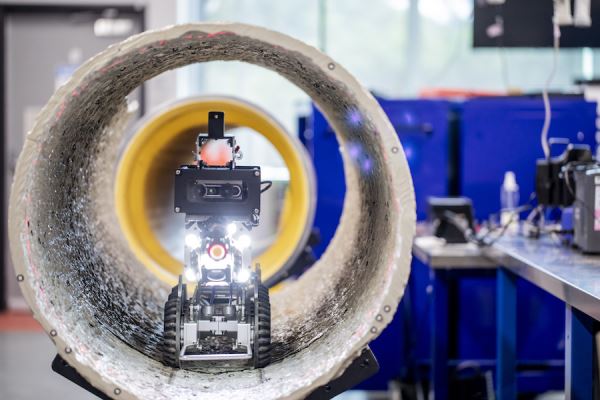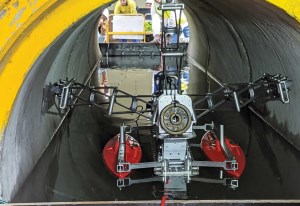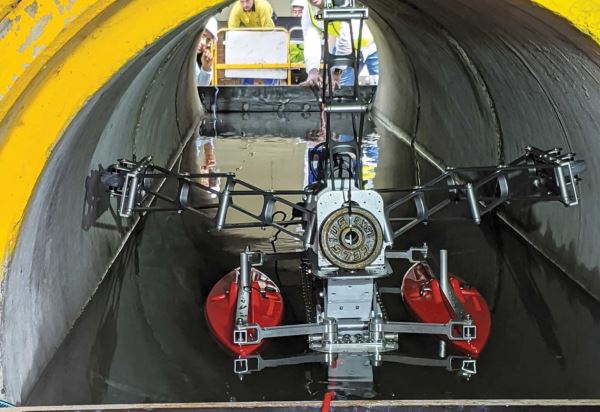Researchers at the University of Technology in Sydney have developed an award-winning robotics system that can inspect pipes without having humans crawl into sewers.
Led by Professor Sarath Kodagoda, the UTS Tech Lab team developed a robotic system that enters the sewer through a 600mm diameter manhole, then expands to either the 1.5 or 2.5m diameter of the pipe, allowing for safe, remote inspection in confined spaces.
The robots are equipped with laser sensing and profiling technologies that identify corrosion levels and other defects in concrete sewer pipes – some of which were laid over a hundred years ago.
Collection of this data, along with the application of machine learning, allows Sydney Water to make timely decisions about renewal methods.
“The things that we flush in the water tend to have sulphate, which is turning into hydrogen sulphide,” Kodagoda explains.
“Then the bacteria living on that surface attacks and converts that into sulfuric acid, which is attacking the concrete, making it softer.”
The UTS solution could potentially save billions of dollars globally in economic, health and environmental costs.
Extending pipe life
In Australia alone, the length of water and wastewater piping in Australia can circle the globe more than six times and 70% of it is underground.
Sydney Water spends an estimated $40 million annually rehabilitating sewers, relying on manual inspection to identify damage or areas for concern.
And staff are required to enter the sewers for a visual inspection.
Information gathered by the robots can reduce out-of-service times and the excavation work that inconveniences road users, the public and public transport.
It can also extend pipe life by pinpointing faults before they become problems.
The work of the iPipes team has been recognised with a National Research Innovation Award presented at the Australian Water Association’s 2020 Australian Water Awards earlier this year.
The Award recognises the significance of the innovative sensing and robotic toolkit, a major technological advancement for utility companies managing ageing underground assets. See video here.
UTS Tech Lab is also collaborating with universities and industry to develop world-first robots that will monitor challenging ocean outfalls.


